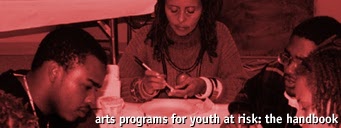|
For purposes of this toolkit we have used the following definitions.
At-risk youth:
Youth who are exposed to factors that may increase their tendency to engage in problem or delinquent behaviors. (See the definition of "Risk factors," below.)
Comparison and control groups:
This evaluation term refers to a group of youth from the program�s target population—a group of youth who share common backgrounds and characteristics—who do not receive program services. By comparing the knowledge, skills, attitudes, and behaviors of these youth to those of youth who are participating in the program, evaluators can determine the effects of the program.
Delinquency:
This term refers to criminal acts committed by youth under a certain age. Each state determines the age under which youth are considered delinquent offenders subject to the juvenile courts and over which they are considered adult offenders subject to the adult criminal courts. In most states, youth under the age of 18 are considered delinquent offenders, and youth 18 and older are considered adult offenders. In some states, the age limit is slightly lower.
Outcome evaluation:
An outcome evaluation determines whether your program�s goals are being met—that is, whether your intended outcomes are achieved—and pinpoints the factors that facilitate or impede your program�s success.
Planning model (or logic model):
A program-planning and evaluation tool that clearly identifies and charts the relationships (or "causal links") among targeted community conditions (needs), program activities, expected outcomes, and expected impacts. The planning model can be used to conduct both process and outcome evaluations.
Process evaluation:
A process evaluation answers questions about how the program was intended to operate and how it actually operates on a daily basis.
Protective factors:
Conditions that buffer young people from the negative consequences of exposure to risk factors—factors that can lead to adolescent problem behaviors—either by reducing the impact of the risk or by changing the way a person responds to the risk; for example, youth bonding with a positive adult role model is a protective factor. (For a more detailed discussion, see the Planning chapter).
Resiliency:
This is the ability to adapt to changes and to approach difficult problems and situations in a positive way. Resilient youth possess a set of qualities that foster a successful process of adaptation and transformation, despite risk and adversity.
Risk factors:
Factors that can lead to adolescent problem behaviors. These are typically classified within four realms: community, family, school, and individual/peer. They include, among other things, extreme social and economic deprivation; family conflict; lack of commitment to school; and alienation. (For a more detailed discussion, see the Planning chapter.)
Risk-focused intervention:
This delinquency intervention approach maintains that in order to reduce juvenile offenders� involvement in problem behaviors, you must first identify the risk factors that lead to those behaviors and the protective factors that counter the negative influence of the risk factors. You must then develop programs designed to reduce risk factors and, at the same time, increase the protective factors that buffer children against risk. In the YouthARTS project, Atlanta and Portland used this approach to delinquency intervention.
Risk-focused prevention:
This widely accepted method of delinquency prevention takes the same approach as risk-focused intervention: in order to prevent a problem from occurring, you first must identify the risk factors that contribute to the development of the problem and the protective factors that counter the negative influence of risk factors. You must then develop programs designed to reduce risk factors, and at the same time, increase the protective factors that buffer children against risk. In the YouthARTS project, San Antonio adopted this approach, which is also referred to as "risk- and protection-focused prevention."
Safe haven:
A place that is perceived (in this case by youth and their families) as safe from physical, emotional, intellectual, and cultural harm.
Status offense:
This term defines an act or type of conduct that is an offense only when committed or engaged in by a juvenile (not an adult) and that can be adjudicated only by a juvenile court. Status offenses include truancy, running away from home, and ungovernable behavior. (The age at which youth are no longer charged for status offenses varies by state.)
Team:
Throughout the handbook this term is used to refer to the group of professionals who work with the youth in a given arts program—arts administrators, artists, probation officers, social workers, and educators. Note: The youth themselves are key to the team process, providing input on the arts activities, the exhibitions, and the performances. Their feedback during the art sessions and during the formal evaluation is essential information, used to determine what works and what does not work in the arts programs.
Treatment group:
This evaluation term refers to a group of youth from the target population who receive program services. By comparing the knowledge, skills, attitudes, and behaviors of these youth to those of youth in the control or comparison group, evaluators can determine the effects of the program.
Truancy:
This term defines a youth�s failure to comply with school attendance laws.

| 


